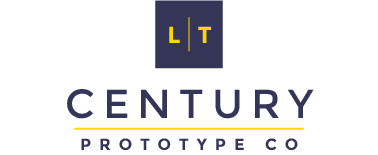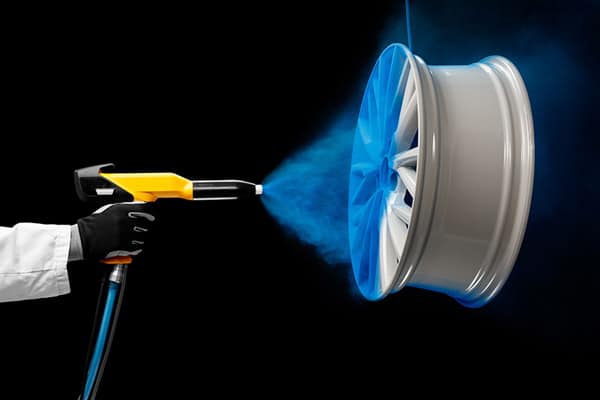For centuries, surface finishing has been a fundamental final step in manufacturing—a craft meant to protect, beautify, and add functionality. While the core objectives remain, the industry is now at the precipice of its most significant transformation. Driven by the imperatives of sustainability, the power of digitalization and breakthroughs in materials science, the future of surface finishing is smarter, greener and more capable than ever before.
This is not just an evolution of techniques, It’s a revolution in how we think about the surface of the products we create.
1. The Green Revolution: Sustainable and Eco-Conscious Finishing
The most powerful trend reshaping the industry is the urgent push towards environmental sustainability. Regulatory pressures and consumer demand are phasing out traditional, polluting methods in favor of green alternatives.
- The Rise of Water-Based Coatings: Solvent-based coatings, long a industry staple, release volatile organic compounds (VOCs) that contribute to air pollution and health risks. The future is water-based. Advanced formulations now match or even exceed the performance, durability and finish quality of their solvent-based predecessors without the toxic emissions.
- Powder Coating Ascendancy: Powder Coating continues to gain market share as a supremely efficient and sustainable option. It involves applying a dry, free-flowing powder electrostatically and then curing it under heat. The process produces virtually zero VOC emissions, and perhaps most importantly, generate almost no waste. Any excess spray can be collected and reused, pushing the efficiency rate above 95%.
- Bio-based and renewable materials: Innovation is taking place at the chemical level. Researchers are developing high-performance resins, pigments and additives derived from renewable sources such as soy, flaxseed, cashew nut liquid and even algae. These bio-based coatings reduce dependence on petrochemicals and offer a lower carbon footprint.
- Advanced Wastewater and Sludge Management: Closed-loop systems for treating and recycling water used in the pre-treatment and rinsing stages are becoming standard. In addition, new processes are designed to minimize or even eliminate the production of hazardous sludge, a major cost and environmental burden for finishers.
2. The Digital Factory: Industry 4.0 and Smart Process Control
The “smart factory” is becoming a reality in finishing shops, bringing unprecedented levels of control, efficiency, and data-driven decision-making.
AI-Optimized Spray Paths: Robotic arms are nothing new, but those integrated with artificial intelligence and machine vision are revolutionary. These systems can scan a section of irregular geometry, identify its exact orientation, and compute the most efficient spray path to ensure perfect, consistent coverage with minimal material waste.
IoT and Predictive Maintenance: Sensors embedded in tanks, ovens, and spray booths continuously monitor critical parameters like chemical concentration, temperature, humidity, and pressure. This real-time data allows for automated adjustments to maintain quality. More importantly, it enables predictive maintenance, alerting technicians to a pump that is showing signs of failure or a heater element that is degrading, preventing costly unplanned downtime.
Digital Twins for Process Simulation: Companies can now create a virtual “digital twin” of their entire finishing line. This allows them to simulate processes, test new parameters, train operators, and identify bottlenecks-all without interrupting physical production. This drastically reduces setup times and removes the risk of implementing new completion protocols.
3. Next-Generation Material Science: Surfaces with Superpowers
The future of finishing isn’t just about looking good; it’s about adding multifunctional, high-value properties to a surface.
Self-Healing Coatings: Inspired by biological processes, self-healing polymers can automatically repair minor scratches and abrasions. When damaged, the microcapsules embedded in the coating rupture and release a healing agent, or the polymer matrix itself reform upon application of heat or light. The technology promises near-permanent protection for automotive paints, electronics and high-value assets.
Superhydrophobic and Oleophobic Surfaces: Using nanotechnology, engineers can create surfaces with extreme repellency to water (superhydrophobic) and oils (oleophobic). These “lotus effect” coatings cause liquids to bead up and roll off, taking dirt and contaminants with them. Applications range from self-cleaning building exteriors and anti-icing aircraft wings to stain-resistant textiles and easy-to-clean medical devices.
Functional and Smart Coatings: The line between a “coating” and a “functional device” is blurring. Emerging technologies include:
Anti-Microbial and Anti-Viral Coatings: Infused with silver ions or other agents, these coatings are becoming standard in healthcare, food processing, and public spaces.
Thermochromic and Photochromic Coatings: Coatings that change color with temperature or light exposure, useful for product branding, smart packaging, and adaptive architectural elements.
Anti-Fingerprint and Anti-Glare: Essential for consumer electronics, these coatings enhance user experience and device aesthetics.
Atomic Layer Deposition (ALD): This vapor-phase technique allows for the deposition of ultra-thin, perfectly uniform films one atomic layer at a time. ALD provides phenomenal barrier properties (against moisture, gases), corrosion resistance, and electrical insulation at a nanoscale, making it critical for microelectronics, batteries, and advanced medical implants.
4. Advanced Application Techniques: Precision and Efficiency
Beyond new materials, the methods of application are also advancing.
- Cold Spray Technology: Traditionally used for metal deposition and repair, cold spray is finding new applications. It propels fine powder particles at supersonic speeds in a solid state, allowing them to bond to a substrate without melting. This enables the application of temperature sensitive materials and the creation of coatings with unique properties, all with minimal heat input and waste.
- High-Velocity Low-Pressure (HVLP) and LVLP Evolution: While not new, turbine-driven HVLP and LVLP (Low Volume Low Pressure) spray systems are becoming the standard for efficiency. They optimize transfer efficiency, ensuring that more paint lands on target and less is lost to overspray, perfectly aligning with sustainability and cost-saving goals.
Conclusion: A Converging Future
The future of surface finishing is not defined by a single technique, but by the convergence of several. A future finishing line might use AI-driven robots to apply a bio-based, self-healing, superhydrophobic coating, with each parameter monitored and optimized by a digital twin, resulting in zero waste and a product that is more durable, functional and sustainable than ever before.
For manufacturers and consumers alike, that means products that last longer, perform better and have less environmental impact. Surfaces are no longer the end of the product – they are the beginning of a new era of intelligent, responsible and high-performance design.
Reference
*Image from https://iptc.org/

